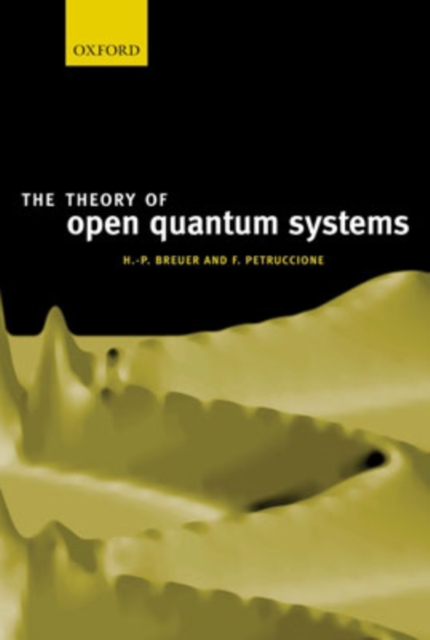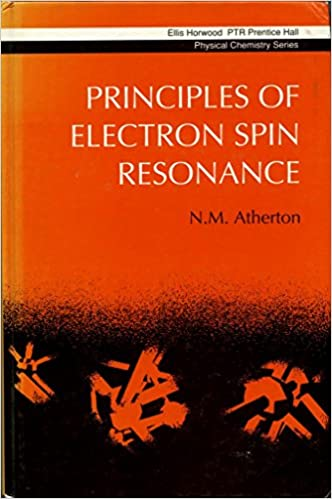Spin systems are always embedded in a molecular system, and such a molecular system is not stationary; at least thermal fluctuations in the molecular geometry are normally present, and such fluctuations also induce fluctuations in the parameters entering the spin Hamiltonian. The main effect of thermal fluctuations is decoherence, i.e. the relaxation of a spin system ensemble towards thermal equilibrium, and there are several ways to describe relaxation without introducing time-varying parameters directly in the spin dynamics simulations.
Spin-lattice and spin-spin relaxation
The concept of spin relaxation is often introduced through the classical Bloch equations, which describes the evolution of a classical magnetization, \(\require{newcommand} \newcommand{\vc}[1]{\mathbf{#1}} \newcommand{\desc}[1]{\begin{quote}\emph{#1}\end{quote}} \newcommand{\p}{\partial} \newcommand{\bra}[1]{\langle #1 |\,} \newcommand{\ket}[1]{\,| #1 \rangle} \newcommand{\braket}[2]{\langle #1 | #2 \rangle} \newcommand{\matel}[3]{\langle #1 | #2 | #3 \rangle} \newcommand{\mexp}[1]{\langle #1 \rangle} \newcommand{\kb}[2]{| #1 \rangle\langle #2 |} \DeclareMathOperator{\Tr}{Tr} \vc{M}\), and the equations read:
\begin{align} \frac{d\vc{M}_x}{dt} &= g\mu_B (\vc{B} \times \vc{M})_x - \frac{\vc{M}_x}{T_2}, \\ \frac{d\vc{M}_y}{dt} &= g\mu_B (\vc{B} \times \vc{M})_y - \frac{\vc{M}_y}{T_2}, \\ \frac{d\vc{M}_z}{dt} &= g\mu_B (\vc{B} \times \vc{M})_z + \frac{M_z^\text{eq} - \vc{M}_z}{T_1} \, . \end{align}The first term on the right describes precession of the magnetization around the magnetic field \(\vc{B}\), while the second term describes relaxation. Note that these equations define two characteristic relaxation times, the spin-lattice relaxation time \(T_1\), and the spin-spin relaxation time \(T_2\). These two relaxation times are in general different, as they pertain to two different relaxation mechanisms: The longitudinal spin-lattice relaxation mechanism causes the \(z\)-component of the magnetization to relax towards a non-zero equilibrium magnetic moment of \(M_z^\text{eq}\) through the exchange of energy with the environment, i.e. spin-lattice relaxation causes the system to relax towards thermal equilibrium on a characteristic time scale \(T_1\) (the environment is also denoted the lattice in this context, hence the name spin-lattice relaxation). In addition to the exchange of energy with the environment, spins within the system may exchange energy with each other through spin-spin couplings, and fluctuations in the these interactions cause loss of phase coherences on a characteristic time scale \(T_2\).
The classical magnetization of a spin is given by the expectation value of the spin operators, e.g. \(\vc{M}_z = \Tr(\vc{S}_z\rho)\), and the mechanisms behind spin-lattice and spin-spin relaxation may also be incorporated in the density matrix formalism. This could, for example, be done through use of Lindblad dissipators or the more advanced relaxation superoperator described by Redfield theory.
Lindblad dissipators
Spin relaxation can be introduced through Lindblad dissipators, which are operators of the form described in a previous article about the spin Hamiltonian.
As an example, one may include spin-lattice and spin-spin relaxation in a density matrix description of a spin system ensemble using the following Lindblad form for the case \(\gamma_n = T_{1n}^{-1} = T_{2n}^{-1}\):
\begin{equation} \frac{d\rho}{dt} = - \frac{i}{\hbar}[\vc{H},\rho] + \sum_n \sum_q \gamma_n \left(\vc{S}_{nq} \rho \vc{S}_{nq} - \frac{3}{4}\rho \right), \end{equation}where \(q \in \{x,y,z\}\) and \(n\) sums over all spins. Another example of Lindblad dissipators is the dephasing operators described below.
Dephasing operators
The diagonal elements of the density operator are known as coherences between quantum states, but as the different spins experience slightly different perturbations from the environment, their phase coherences may decay over time. This process, the decay of coherences between quantum states without affecting the populations of the states, is known as dephasing. As an example, consider singlet-triplet dephasing in a radical pair. This can be done using two Lindblad dissipators, one with the singlet projection operator \(\vc{P}_S\) and one with the triplet projection operator \(\vc{P}_T\):
\begin{equation} \frac{d\rho}{dt} = - \frac{i}{\hbar}[\vc{H},\rho] + k_{ST} \left(\vc{P}_S \rho \vc{P}_S + \vc{P}_T \rho \vc{P}_T - \frac{1}{2}\{\vc{P}_S,\rho\} - \frac{1}{2}\{\vc{P}_T,\rho\} \right) \, . \end{equation}Here it was used that projection operators are idempotent, i.e. \(\vc{P}_S^2 = \vc{P}_S\), as well as hermitian. Note that the completeness relation \(\vc{P}_S + \vc{P}_T = \vc{1}\) may simplify the case of singlet-triplet dephasing:
\begin{equation} \frac{d\rho}{dt} = - \frac{i}{\hbar}[\vc{H},\rho] - k_{ST} \left( \vc{P}_S \rho \vc{P}_T + \vc{P}_T \rho \vc{P}_S \right) \, . \end{equation}The effect of dephasing can be seen directly from this form of the singlet-triplet dephasing operator, i.e. that off-diagonal terms in the density operator are decaying.
Redfield theory
A general approach for describing the spin relaxation caused by time-dependent terms in the spin Hamiltonian is through Redfield theory. Redfield theory relies on second-order perturbation theory as well as the assumption that the fluctuations in the magnetic interactions can be described as a Markov process. The latter essentially means that the fluctuations in the local magnetic field should be random, i.e. the evolution of the spin system ensemble should depend only on its current value. In practice, this means that the correlation time of the fluctuations should be shorter than the time scale of the coherent spin evolution in the radical pair.
With the spin Hamiltonian given as \(\vc{H} = \vc{H}_0 + \vc{H}_1(t)\) such that \(\vc{H}_1(t)\) describes the time-dependent perturbation, the Liouville-von Neumann equation with a Redfield relaxation superoperator term may be written as:
\begin{equation} \frac{d\rho_{nm}(t)}{dt} = -\frac{i}{\hbar}\left([\vc{H}_0,\rho(t)]\right)_{nm} + \sum_{p,q} \vc{R}_{nmpq} ( \rho_{pq}(t) - \rho_{pq}^\text{eq} ) \, . \end{equation}Here \(\rho_{pq}^\text{eq}\) is the density operator for the ensemble at thermal equilibrium, and the relaxation superoperator is defined by:
\begin{equation} \vc{R}_{nmpq} = \frac{1}{\hbar^2}\left( J_{npmq}(\omega_{np}) + J_{npmq}(\omega_{qm}) - \sum_{r} \left(\delta_{np}J_{qrmr}(\omega_{qr}) + \delta_{mq}J_{nrpr}(\omega_{rp}) \right) \right), \end{equation}where the spectral densities are defined as:
\begin{equation} J_{npmq}(\omega) = \int_0^\infty \overline{\matel{n}{\vc{H}_1(t - \tau)}{p}\matel{q}{\vc{H}_1(t)}{m}} e^{-i\omega \tau} \, \text{d}\tau \, . \end{equation}Note that use of Redfield theory might be quite involved, but it allows for a rather good description of spin relaxation when the assumptions apply. In fact Redfield theory has already been applied to models of the radical pair hosted by cryptochrome, where the correlation functions used for calculation of spectral densities in some cases were obtained through molecular dynamics simulations in order to obtain a model as realistic as possible.

